Stephen Dafoe is probably best known for his numerous books on the Knights Templar, and in particular, his magnum opus, Morgan: The Scandal That Shook Freemasonry.
But aside from being an accomplished researcher, author and journalist, Stephen has far more strings to his bow and is definitely the kind of chap you want to spend a few hours conversing with sharing some single malt and a cigar!

Getting the cool author vibe down to a ‘T’!
Editor Philippa Lee catches up with Stephen, albeit it (sadly) only via email.
ED: You are best known for your books on the Knights Templar. Your more speculative works – *The Warriors and The Bankers (Lewis Masonic), and The Knights Templar Revealed (2006, Constable and Robinson) – were co-authored with Alan Butler.
How did that writing relationship develop, and what made you take the subject further, as a solo author, towards the more conventional historical books – Nobly Born: An Illustrated History of the Knights Templar, The Compasses and the Cross and An Illustrated History of the Knights Hospitaller.
You must easily be regarded as one of the foremost authorities on the KT, and have appeared in several documentaries; where did the fascination start?
SD: As a kid, I always liked knights and dragons and Vikings and all of that sort of thing. I recall my parents buying me a couple of decorative shields to hang on the wall with crossed swords, and I had a couple of knights in armour bookends for my books.
As we get older, we realize the only real dragon is the old lady down the street shooing you out of her yard. But the historical bits remain, and I maintained an interest in medieval history, particularly the Crusades.
I’d become a Freemason in 1992, and through that, I began researching the Craft and its concordant bodies. I’d certainly been aware of the Templars and Hospitallers and the Teutonic Knights prior to becoming a Mason. But the involvement in Freemasonry certainly rekindled that earlier interest.
ED: Lewis Masonic are republishing two of your books I believe?
SD: I’m tremendously excited to have Lewis Masonic reproducing Warriors and Bankers and Nobly Born, the latter in a trade paperback format. Nobly was my first truly solo effort and it is a book I am particularly proud of.
ED: You have also written a few books that I had not encountered before, one is Esoteric Odyssey. Could you tell us a bit about the book; it sounds fascinating, what is the story behind the story?
SD: Some years ago I bought an original copy of Thomas Marryat’s 1790 work The Philosophy of Masons. in Several Epistles from Egypt to a Nobleman.
It’s a pretty unique book that gives us a glimpse at a transitional era poised directly between the revival of interest in alchemy of the mid-1700s and the revolutionary beginnings of modern science in the late 1700s.
The book, controversial at the time, had non-mainstream 18th-century philosophy and science with unorthodox ideas about esoteric knowledge, history, religion and Freemasonry.
In 2010, fellow Mason Randy Williams and I decided to re-release an annotated edition of the book with an introductory essay through Cornerstone Publishers in America.
It’s out of print now, though I have about a dozen copies available on my website for anyone interested in obscure Masonic literature.
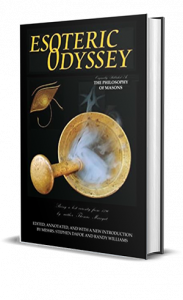
ED: Then there’s Everything I needed to know about Freemasonry; I Learned as an Apprentice – to quote: ‘The book is one man’s reflection on the lessons learned in that first degree and is a thorough examination of the philosophy taught with each step, pace and gesture.’
This is a book so many Masons need to read!
Have you now retired from Freemasonry and if so, what was your reason for doing so, if you are happy to share?
SD: As I mentioned earlier, I joined the Craft in 1992 at a transitional period in my life. I had been invited a decade earlier by a fellow I volunteered with but declined the invite. My joining the Craft came about through a man and mentor I worked with. I knew he was a Freemason and determined that any organization made up of men of his character and integrity is an organization I should look at.
Well, of course it did not take me long to realize that men like my mentor were few and far between in the Craft. It seemed largely populated with an assortment of blithering idiots, men seeking power and title, and men who like to get dressed up in tuxedos to eat shitty egg salad sandwiches at 11 p.m.
I say this in somewhat jest as there were some great role models and great lessons to be learned, and I’ve remained friends with many people I met through Freemasonry, some of whom I’ve not physically met.
But after 18 years, I packed it in.
I’d started a local news publication, and Town Council met the same night as the lodge. As such, I could seldom attend. Some months later, I had a free night to attend and found the same men sitting in the same chairs arguing about whether to give the Boy Scouts $50.
By this time, I was reasonably involved in the happenings of my community from covering it as a reporter. So I decided in December of 2010 to take all the time I was devoting to Freemasonry in all its various apron, hat and cape forms and give that time volunteering and getting involved in my community.
In a real sense, I was applying the lessons of Freemasonry to the real world around me.
I’ve not looked back on that decision, but having been in the Craft for 18 years allowed me to make and put into effect that decision.
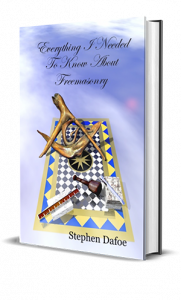
ED: You have written extensively on some of the issues surrounding the structure and future of the Organisation; what would you say is the most important step it can take now that we have entered a new era created by the current pandemic?
SD: Well, I suppose a group of men and women accustomed to donning tuxedos, aprons, capes, hats, sashes, and the like ought not to be bothered by another piece of fabric across their faces until we can get through this pandemic.
I do think, and I say this as an outsider now for nearly ten years, that while one cannot practice Freemasonry within a lodge room, what an excellent opportunity to practice it outside the lodge room.
The Operative Craftsmen learned their trade as apprentices, fellowcraft and masters. You have the tools. You know how to use them. Use them in your communities.
All of that said—I do believe, or at least hope, that Freemasonry, like businesses and organizations, thrust into using technology by this pandemic will do just that. It’s made many of us in business ask ourselves why in the hell we are getting kitted up and driving someplace to meet for two hours when we could have sat at home and conducted the same business.
Granted, that does not work for the degrees in any meaningful sense. But a lot of lodge business, then and now could be handled more efficiently than taking men and women from their families three or four nights a week.
ED: Morgan: The Scandal That Shook Freemasonry – you are currently working on a second edition of this extraordinary story of the abduction and probable murder of William Morgan by Freemasons.
A narrative non-fiction book, it includes a wealth of endnotes and appendices reprinting the primary sources from which you were able to retrace historical steps and uncover a 183-year-old cold case.
That must have been really exciting! As a researcher and writer myself, I relish the adventure of research; it is akin to detective work and when you find that elusive bit of information, that ‘eureka’ discovery that cinches the story, that’s an unforgettable experience.
How do you go about your research and writing; there are many budding authors who would love to know any tips?
SD: Morgan is the book I spent the most time researching—10 years or more in all, although not continuously. Before writing the book, I did a couple of papers on the subject and a four-part series for Masonic Magazine, which I published in the early 2000s.
In the case of Morgan, I read as much on the topic as I could get my hands on. The Masonic books published from the time and beyond as well as the anti-masonic books on the subject.
As I dove more in-depth, I began researching topics around the time from the political leaders and players of the day to information about the area where things took place.
I was able to acquire some court transcripts and other documents from a Masonic museum, which helped form some of the dialogue in the narrative.
With a story like Morgan, the perspective presented by the Masonic and anti-Masonic accounts are completely at odds, as one would expect.
I would suggest to writers to develop an objective yet suspicious approach.
What is the motivation for the material being presented as it is? What other accounts are similar and which are different.
In short, develop a reliable bullshit detector.
ED: You’ve had quite a diverse career – weren’t you were a stage magician as a young man?
Then, after writing a book each year for roughly a decade, you started Morinville News, a community newspaper in Western Canada where you live.
You’ve run that for the past 10 years, and also become Town Councillor? Any plans for retirement, or do you have more projects in the pipeline?
SD: Yeah, I’ve done a lot of different stuff in 58 years. I was joking with a guy over a beer. I said I’ve done a lot because I’m mostly unemployable and get bored quickly.
Retire? My wife Bonnie doubts it.
For the last 10 years my primary focus has been an online community news publication that had three sites.
We wound that down as a daily on its 10th anniversary June 12 but still provide community news and information through MorinvilleOnline.com, which combines the three facets we had before.
The transition from daily to damned-near-daily has allowed me to focus on other aspects of my company.
This will include video production, some consulting and republishing some of my own back catalogue and hopefully newer pieces.
As to politics. I’ve never considered myself a politician, but I have served on our local Town Council for the past seven years this October.
I’ve one year left in my second term, and though I love it, I’ll need to see if the people want me in the chair or the electric chair.
One of my Masonic mentors said, and I’ve never forgotten it, “The office should seek the person, not the person seek the office”.
It was damned good advice then and now.
ED: We can’t end without mentioning your latest venture – your recent book is a stark departure from your previous works.
Anyone who knows you from your Facebook page, is aware of your hilarious wit, enviable culinary skills, and a penchant for good beer and liquor.
So, I was delighted to see your latest offering – Getting Shitfaced & Living To Write About It – a humorous collection of classic and original cocktail recipes as well as scotch and whiskey history and trivia.
From what I recall, you originally wrote it as a joke gift for friends but it looks like numerous requests for the original book prompted an expansion to a wider audience.
SD: We’ve got this little area at the bottom of our stairs separating my studio office area on one side and laundry and furnace area.
Four years ago, I got a pile of weathered wood from some friends and told Bonnie I was going to build a pub at the bottom of the stairs.
“You go right ahead and do that”, she said, mocking my notion of a basement pub, and not thinking I’d do it.
Well, I did it. It’s called The soaring Pig, and it’s taken on a life of its own.
It’s a great little spot that’s spilled into my studio where I keep my single malts. Along the way, I became fascinated with the history and trivia of spirits, and rekindled my love of making and creating cocktails.
My neighbour, The Talented Ivan Deveau and I did a YouTube channel, and out of that I decided last summer to write a brief book on classic and original cocktails as well as useless whisky trivia as a gag gift for friends.
I was surprised at the reaction, so I printed some more copies. They’re available on my site.
ED: Thanks so much to Stephen for sharing his thoughts and very wise words on Freemasonry. If I’m ever in Canada, I hope a visit to The Soaring Pig is on the cards!
Check out Stephen’s website and social media, and maybe order a few new books!
Email: author@stephendafoe.com
Instagram: @dafoewrites
Facebook: https://www.facebook.com/DafoeWrites
Article by: Philippa Lee. Editor

Philippa Lee (writes as Philippa Faulks) is the author of eight books, an editor and researcher.
Philippa was initiated into the Honourable Fraternity of Ancient Freemasons (HFAF) in 2014.
Her specialism is ancient Egypt, Freemasonry, comparative religions and social history. She has several books in progress on the subject of ancient and modern Egypt. Selection of Books Online at Amazon
Books by Stephen Dafoe

Nobly Born: An Illustrated History of the Knights Templar
The Poor Fellow Soldiers of Christ and the Templar of Solomon, popularly known as the Knights Templar, was the most famous and infamous of the crusading military orders.
Created in the aftermath of the First Crusade,(1096-1099) the Templars were established to ensure the safety of the large numbers of European pilgrims, who flowed towards Jerusalem after its conquest.
The Templars were an unusual Order in that they lived both an active and contemplative life; making them effectively the first warrior-monks in the western world.
As such the Templars quickly expanded beyond their role as protectors of pilgrims and played a vital role in many battles of the Crusades.
Although they suffered more defeats than celebrated victories, the Templars are remembered as Christendom’s most fearless military . . .

The Warriors and Bankers
In The Warriors and the Bankers, the research and writing team of Alan Butler and Stephen Dafoe bring their combined experiences to bear on the question asked for hundreds of years, What became of the Knights Templar?
Arrested in 1307, dissolved in 1312 and executed by 1314, the Templars have been the subject of many theories concerning their possible survival.
This book examines these theories against new evidence and information.
Additionally the authors put forth, for the first time, a completely NEW theory that has caught the ears, eyes and attention of many readers.
The ultimate conclusion is that the Templars did survive virtually intact and that ,in a very direct sense, they may still be one of the most potent forces at work in the world at the start of the new Millennium.

The Compasses and the Cross
The author of Nobly Born: An Illustrated History of the Knights Templar, traces the origins and evolution of the Masonic Knights Templar from their beginnings in the middle of the eighteenth century to its present form.
A new addition to existing literature on the Knights Templar which provides thought-provoking information on the evolution of the order from the very earliest days.
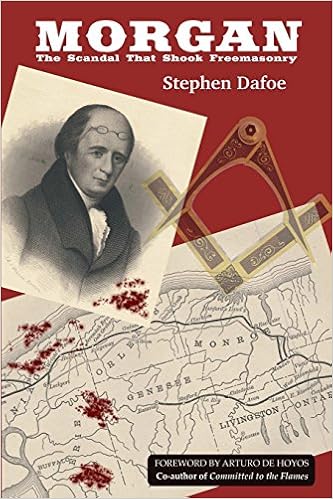
Morgan: The Scandal That Shook Freemasonry
For more than a century, Freemasons have held fast to the belief that Masons did not murder William Morgan; rather they deported him to Canada.
In “Morgan: The Scandal That Shook Freemasonry”, author, journalist and Freemason Stephen Dafoe disassembles that myth while reassembling the trail of evidence that remains to uncover the facts behind this 183-year-old Masonic cold case.
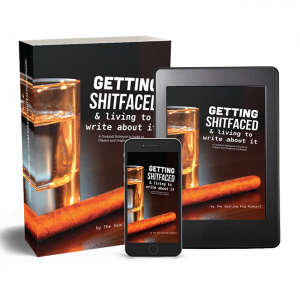
Getting Shitfaced & Living To Write About It
James Joyce drank. So did Raymond Chandler, John Cheever, Dylan Thomas, and Dorothy Parker. Legend says Ernest Hemingway loved his Mojitos, and Jack Kerouac dug the Margarita.
Edgar Allan Poe heard cognac and brandy eggnogs rapping, rapping at his chamber door long before he wrote his famous poem.
Despite writing The Rum Diary, Hunter S. Thompson preferred Mojitos, beer and Chartreuse.
The poet Charles Bukowski was a guy who loved his boilermakers, as any self-respecting Barfly would or should.
Why do so many famous writers drink? I have no idea.
This book is not about famous writers and their drinking habits; it is about an unfamous writer and his drinking habits.
Getting Shitfaced & Living to Write About It is a collection of what I’ve learned about alcohol as a home bartender over the years.
It has recipes for the classics I love to serve as well as original cocktails I’ve created or modified.
And there is a generous helping of booze and cocktail trivia.
Recent Articles: in meet the author series
 Meet The Author - Albert Mackey As a contributor to the literature and science of Freemasonry, Doctor Mackey's labours have been more extensive than those of any other in America or in Europe. |
 Philippa Lee talks Masonry and metaphysics with Ben Zion, the author of two must-have books on esoteric Freemasonry. |
 Meet The Author - Robert Freke Gould A brief look at his life, Gould was a soldier, barrister and prominent Freemason and Masonic historian. He was also one of the founders of Quatuor Coronati Lodge in 1886 |
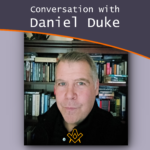 In Conversation with…Daniel Duke Author Daniel Duke talks to Philippa Lee about his new book 'Secret History of the Wild, Wild West' the third in a series on Outlaws, secret societies and hidden treasure. Dan is the great-great grandson of the infamous Jesse James, and the definitive authority on the subject. |
 Mike's Masonic Walks and Talks Mike Neville offers walks and talks primarily around London, based on his vast knowledge of the area and his specialist subjects, which cover all aspects of Masonic history, and some unique insight into the more shady side of 'Crime and the Craft'. |
 Darren Lorente-Bull is the author of 'The Other Brotherhood: When Freemasonry Crossed the English Channel' and five other books. Here he talks to Philippa Lee about his beliefs, his Freemasonry, and books. |
 Meet The Author - Angel Millar This month I am delighted to interview Angel Millar – author of five books on Freemasonry, esotericism, and world spiritual and initiatory traditions. |
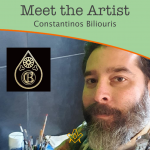 Constantinos Biliouris is a Greek Artist and brother from the Grand Lodge of Greece who creates a range of hand painted masonic aprons. |
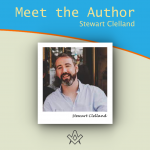 This month Editor Philippa Lee meets Stewart Clelland the author / translator of The Green Book of The Élus Coëns |
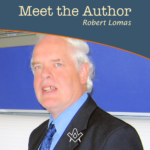 Editor Philippa Lee interviews well-known Masonic author Dr Robert Lomas |
 This month we feature ten of our recommended Masonic authors ranging from the early 1900s to the modern day, and we offer our 'Square choice' of their books. |
 We talk with ‘Brother Hogarth’ who is currently writing a series of articles featuring the Masonic art of William Hogarth. |
 If you would like your work to be featured in The Square, please take a look at our submissions guidelines and send any ideas or contributions to the Editor for our consideration. |
 A slight deviation from our usual 'Meet the Author' theme but equally as interesting, we have a 'Portrait of an Artist' - Travis Simpkins - the man capturing the likeness of Freemasons worldwide! |
 This month we Meet the Author: historian and biographer Kevin Shillington. |
 This month in 'Meet the Author' we look at the life and work of Carl H. Claudy, a prolific Masonic author who believed that Masonic education is the foundation for the Fraternity. |
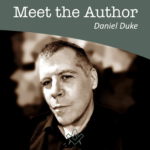 Daniel Duke, the great-great grandson of Jesse James, grew up surrounded by stories of lost outlaw treasures. |
 Stephen Dafoe - numerous books on the Knights Templar, and Morgan: The Scandal That Shook Freemasonry. |
 Paul Sparks – author of A Guide for the Masonic Treasurer |
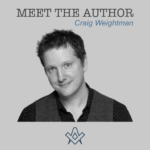 Craig Weightman – author of A Journey in Stone |
masonic knowledge
to be a better citizen of the world
share the square with two brothers

click image to open email app on mobile device







